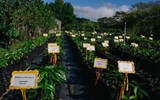What should I do if coffee powder lumps? Is it normal for coffee powder to hang statically on the wall? How to eliminate bubbles in lahua milk foam?
I don't know if my friends have noticed that when baristas make some products, they always hit the table with something and make a "Duang Duang Duang" sound, like some kind of addition ceremony, which makes the coffee taste better.
In fact, the starting point of these actions is to make the coffee taste better. But inevitably, too much movement will have an impact on the people around you. So, Qianjie, let's share the reasons why baristas do this, and the relatively good solutions.
The first reason for knocking on the table: with the advent of autumn and winter, there are more and more knocking sounds, especially when making hand-brewed coffee. Because the weather is drier, coffee powder is more likely to produce static electricity because of friction during grinding. Static electricity will not only make some fine-grained coffee powder adsorb together, becoming an obstacle to extraction, but also make the coffee powder adsorb on the container containing the coffee powder. As a result, baristas use tapping to disperse / shake down the coffee powder that is attached together or on a container.
The deeper the roasting of the coffee beans, the greater the electrostatic adsorption, and we need to spend more time and times knocking down the coffee powder, which does have an impact on the people around us. Therefore, Qianjie lists a solution here! The front street of this plan is also often mentioned, that is-- use RDT!
RDT is an anti-static method proposed by David Ross, which is called Ross Droplet Technique (Ross drop Technology), or RDT for short. This method is very simple, since it is due to the generation of static electricity caused by excessive dryness, which leads to the adsorption and agglomeration of coffee powder, then we can solve the problem directly at the source. By spraying a very small amount of water on the coffee beans and then grinding them, the dryness can be solved and static electricity will not occur too easily. However, when implementing this practice, we need to pay attention to the fact that it is best to find a device that can atomize water, so as to ensure that the amount of water can be controlled. Once we spray too much water, it will have a negative impact on the flavor of coffee beans and the knife head of the grinder. Therefore, the amount of water must be small. And if we don't want to add water, we can also set the percussion place in some soft places, such as a piece of cloth on the table, or a piece of rubber.
The second reason for knocking on the table: to eliminate bubbles, there is another reason why baristas will knock on the table, that is, when making hot milk coffee, the foam is not hit well! When we do not use the right way or make a mistake in the process of getting rid of the foam, there are a lot of large particles of air bubbles on the surface. Then most baristas will "pierce" these bubbles by knocking and pulling flower pots, and this action also has a professional term, called "shock jar".
The vibrating cylinder can remove large bubbles from the surface more quickly than other ways. But at the same time, it has a lot of negative effects! Because the shock tends to be strong, this will accelerate the delamination of foam and milk, which, if not put into use immediately, will make the foam more unfavorable for flower drawing because of the lack of mobility caused by layering in a short period of time. (exaggerated ↓)
Of course, not only shake the cylinder, but also pour the cylinder (pour the cylinder: pour milk foam from one tank to another). Although it can also play a defoaming effect, it can also accelerate the delamination of milk and bubbles. But unlike the vibrating cylinder, it doesn't make much noise. So! Under the condition that we do not want to disturb others and do not fear the trouble (washing one more tank), it would be a good choice to use inverted cylinders to eliminate foam.
-END-
Important Notice :
前街咖啡 FrontStreet Coffee has moved to new addredd:
FrontStreet Coffee Address: 315,Donghua East Road,GuangZhou
Tel:020 38364473
- Prev

The correct way to brew coffee by hand! What is the core concept of three-stage? How to brew coffee with coffee powder? Do you pay attention to skills in making coffee?
In order to reproduce the delicious coffee you drink in a coffee shop at home, in addition to purchasing the same coffee beans, some friends will also use the same parameters and methods to brew it. I never thought that the coffee that was brewed was always unsatisfactory and was always close to being good. Why? They are obviously the same beans, the same proportion
- Next

Starbucks buys 2 new farms to ensure coffee supply
▲ Click to pay attention| Daily Boutique Coffee Culture Magazine Coffee Factory Recently, Starbucks released the latest news that the company will invest in new farms in Costa Rica and Guatemala to protect the coffee supply chain from the severe impact of climate change and to further consolidate its global coffee supply system.
Related
- Why does hot American coffee taste bitter? Difference in proportional concentration between hot American and ice American
- Is espresso stored overnight in the refrigerator harmful to your body? Is frozen coffee better than freshly ground coffee?
- What parameters and proportions of water temperature should be used to grind and brew fresh coffee beans? Why can't I drink freshly roasted coffee right away?
- Customers have "changed" Manner's new products! Shop assistant: Please don't mess around!
- Remove sockets in customer areas at Starbucks stores?! Netizen: I won't go if I really tear it down
- What is the difference between the taste steps of sun-dried coffee and washed coffee? Why is sun-cured coffee sweeter and washed coffee sour?
- The recipe for salty grapefruit dirty is revealed! Coffee Festival salty grapefruit dirty coffee making materials parameters ratio milk share!
- How about the flavor of Sunlight 74158 at Sidamo Banshaha Mathieu Processing Factory in Ethiopia? 74158 Share the proportion of coffee brewing parameters!
- What effect does Italian American coffee with filter paper have? Will coffee taste better if it is put on filter paper at the bottom of the powder bowl?
- What is the color difference in coffee beans? What are the characteristics of honey processed coffee beans? Why are the anaerobically treated coffee beans uneven in color?

